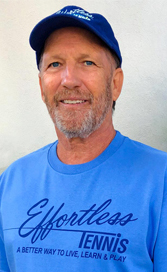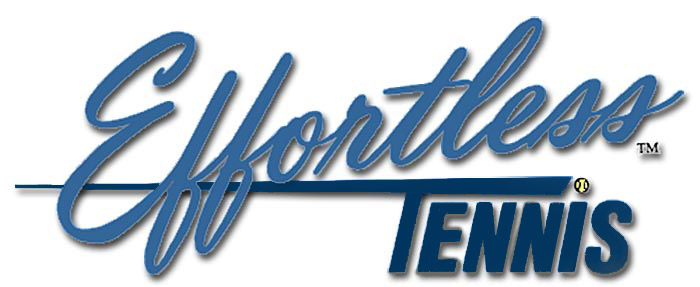A Physically & Psychologically Healthier Way to Live, Learn, & Play
Beyond Competition
A Physically & Psychologically Healthier Way to Live, Learn, & Play
Beyond Competition
Keys to Peak Performance
 1. Joy
1. Joy
This is, without a doubt, the most important piece of the peak performance puzzle. If someone is not enjoying themselves while they are playing, they are performing at less than their potential. People can sometimes play well when they are angry or fearful, but they can not play their absolute best. Absolute best only comes when you are experiencing joy. This is not joy after winning a point or a match, but joy each time you are rallying and most importantly at contact.
2. Relaxation
In order to play your very best you must be relaxed. Alert, yet relaxed. Not only do people react faster when they are relaxed, they are also able to see and assess situations more quickly and clearly—and if all that were’t reason enough to relax, learning is easier and faster when you are relaxed. This is one of the most important parts of Effortless Tennis. It was only when competition was removed from the program that it became clear how critical relaxation was to peak performance. Only in a cooperative environment is it possible for someone to experience true relaxation. It just won’t happen in competition.
3. Concentration
Tennis is a moving meditation. One must stay focused on the ball while running all over the court. Meditation is difficult when there are no external distractions, it is even more challenging when you must follow the ball and run after it. The concentration it takes to be a great player is phenomenal. Developing great concentration takes years. It is one of the most difficult challenges. Our minds like to wander. It is easy to project into the future or linger in the past, but we can train our minds to stay focused in the present.
4. Patience
The ability to suppress annoyance when confronted with delay. To be good at anything challenging takes years of work. During that time it is easy to lose patience with the process and move on to something else. This is a key to life. If you can maintain patience anything is possible.
5. Perseverance
That ability to stay with something despite difficulties or obstacles. No matter what you want to learn or do, this is one of the skills needed to achieve your goal. There will be what seem like a myriad of obstacles, but if you can stay focused on your goal it will happen. It sometimes takes longer than we would like.
6. Self-Motivation
This is the key that separates success from failure. There may be people that will help encourage you to do something, but basically it must be your own motivation that gets you there. If you can’t motivate yourself, no one is going to be able to do it for you. You are the one that has to put in the practice time. No excuses.
7. Cellular Memory
Every time you swing the racquet and move the body it leaves an imprint of that action in the mind and body. Every time that action is repeated it reinforces that imprint. After a certain amount of repetition, that action becomes a habit that will repeat automatically, without having to think about it. This is why it is so important, from the beginning, to program efficient movements into the subconscious, because once a habit is formed, change is much more difficult.
There is also mental and emotional cellular memory. If someone experiences anxiety or fear as the ball is coming to them, that reaction will also be recorded in the subconscious. When someone sees the ball coming to that spot, that emotion is triggered automatically. It is very difficult to hit good shots when anxious or fearful.
8. Hand/Eye Coordination (Tracking the Ball)
There are very few places where one has to react consistently as fast as one does on a tennis court. Over the course of time, with practice, hand/eye coordination will improve dramatically, but it takes time. Keeping your eye on the ball is mostly a matter of focus, concentration. Your eyes leave the ball, but it is actually your mind leaving the ball. The eyes are the key to timing your shot. All information we are getting is coming through our eyes. If our mind is distracted with some other thought, it is like the camera to our eyes is turned off, we are not getting any information at that time. It is common for people, just before they actually contact the ball l, to look up to see where their shot is going. They’ve watched the ball 99% of the way, but that last percent can be very important.
9. Stroke Mechanics
To be able to hit the ball into the court on a consistent basis requires efficient stroke mechanics. The contact point has to be precise, the angle of the racquet face just right, and the speed of the swing in synch with the ball. The difference between success and failure is fractions of a second and a few degrees of angle. Over the course of time, if you wish to play better players, it is necessary to make your strokes more and more efficient. Having efficient strokes is a long-term project, but well worth the time invested. Stroke mechanics is a matter of physics. The body moves in certain ways that make hitting the ball seemingly effortless. There are millions of ways to hit a ball, but what we are looking for is the most efficient forms so that we can react fast enough to hit very fast balls.
10. Footwork
Just as there are most efficient stroking patterns there are also most efficient footwork patterns. At higher levels of the game you don’t have time to take even one extra step. An important part of footwork is weight transfer. To hit a solid shot it is necessary to transfer our weight into the ball, from our back foot to our front foot, at the ideal contact point and at the ideal moment in time. This is quite challenging to do consistently.
11. Rhythm
We need to have good rhythm to play good tennis. Good rhythm means good timing, and as the saying goes “timing is everything”. It’s true. There is one ideal moment to hit each shot. A tenth of a second is a long time in tennis, and sometimes when we are off by a tenth of a second that is too much. To generate maximum velocity with minimum expenditure of energy requires contacting the ball at the one moment when the ball is at the ideal contact point. Just as we do not want to be late when hitting a shot, we don’t want to be early either. As our skills develop we are better able to see the ball so that we are better able to time when to hit the shot. Timing is interrelated with hand/eye coordination. We must be able to track the ball and keep ourself focused on the ball simultaneously in order to be “in rhythm”.
12. Breathing
Regulating your breathing allows more efficient use of your energy. The skill of breathing while you play is often overlooked. Most people hold their breath at the moment of contact. People are so busy trying to hit the ball that they forget to breathe until they are gasping for air. Holding your breath at contact means you are tightening muscles as you are hitting the ball. It seems like tightening your muscles would create more power, but what is actually happening is that the tightening decelerates the racquet thereby diminishing power. Over the last dozen years or so exhaling on contact has been championed by many of the mental training experts in the game. The new piece of the puzzle from Effortless Tennis is inhaling as your partner contacts the ball, timing your inhale to continue until you exhale as you contact the ball. Soft inhale, soft exhale.
13. Confidence
This is the final key to peak performance. If you are not sure you are going to be able to get to the ball and hit it back in the court, you are decreasing your chances of making the shot. Confidence does not come from some false bravado, but from an internal knowing that you have the skills necessary to be successful. When you have developed the other keys, confidence will take care of itself. Confidence is the end result of doing the work.
